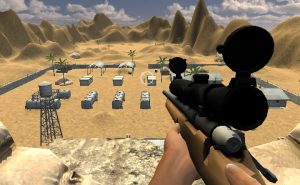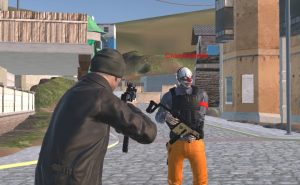
17534

Iron Friend: A Deep Dive into the Horror Survival Experience
Introduction to Iron Friend
What Is Iron Friend?
Iron Friend is a spine-chilling first-person horror game that plunges players into a world of dark mysteries and terrifying encounters. Set in an eerie, dimly lit environment, Iron Friend tasks players with surviving a nightmarish scenario as a staff member thrust into a horrifying situation. The game’s core objective is to uncover the truth behind sinister events while navigating creepy locations, solving intricate puzzles, and avoiding lurking dangers. Iron Friend masterfully blends atmospheric tension with strategic gameplay, creating an unforgettable experience where every decision carries weight. With its haunting visuals, immersive sound design, and relentless suspense, Iron Friend has quickly become a standout title in the horror genre.
The Premise of Iron Friend
In Iron Friend, players begin their journey with a cryptic late-night shift assignment: “Get here now. We need you to investigate the power outage.” This simple directive spirals into a harrowing quest filled with dread and discovery. Iron Friend’s narrative unfolds through environmental storytelling, cryptic clues, and chilling audio logs, all of which piece together a larger, unsettling mystery. As players explore abandoned buildings, shadowy corridors, and other haunting locales, Iron Friend ratchets up the tension, ensuring that every corner turned could lead to salvation or doom.
Gameplay Mechanics in Iron Friend
Controls and Movement
Iron Friend prioritizes intuitive controls to maximize immersion. Players navigate using WASD keys, crouch to avoid detection, and interact with objects using the F key. The game’s movement mechanics are deliberately paced to amplify tension—every creak of a floorboard or rustle in the darkness feels consequential. Iron Friend’s environments are designed for exploration, requiring players to physically interact with doors by dragging them open with the LMB. This hands-on approach ensures that even mundane actions in Iron Friend contribute to the overarching sense of vulnerability.
Puzzle Solving and Inventory Management
Survival in Iron Friend hinges on puzzle-solving and resource management. Players collect keys, batteries, coins, cassette tapes, and other items critical to progress. The inventory system (accessed via the Tab key) forces players to prioritize essentials, as carrying capacity is limited. Iron Friend challenges players to think creatively: a coin found in a dusty drawer might unlock a vending machine, while a cassette tape reveals cryptic audio clues when played. Environmental puzzles, such as deciphering strange markings or aligning symbols, require keen observation. Iron Friend ensures that every solved puzzle deepens the narrative while escalating the stakes.
Enemies and Threats in Iron Friend
The Iron Friend Entity
The titular Iron Friend is the game’s most formidable threat—a mysterious entity that stalks players throughout their journey. Encounters with Iron Friend are unpredictable, often triggered by progress or missteps. The entity’s presence is signaled by distant screams, flickering lights, or sudden temperature drops. Iron Friend cannot be defeated through conventional means; evasion and stealth are paramount. The game’s AI ensures that Iron Friend adapts to player behavior, making each encounter uniquely terrifying. Surviving Iron Friend’s pursuit requires mastering the environment, utilizing hiding spots, and timing movements perfectly.
Environmental Hazards
Beyond the Iron Friend entity, the game’s settings themselves are adversaries. Collapsing structures, malfunctioning machinery, and toxic zones add layers of danger. Iron Friend’s dynamic lighting system—reliant on a finite flashlight—forces players to conserve batteries or risk navigating pitch-black corridors. Sound design plays a crucial role; distant noises might signal approaching threats or mislead players into traps. Iron Friend’s world is a carefully crafted deathtrap where every element conspires to unsettle and challenge.
Items and Clues in Iron Friend
Essential Collectibles
Iron Friend’s progression is driven by collectibles that unlock new areas and story beats. Keys open locked doors, batteries recharge the flashlight, and coins activate vending machines dispensing critical items. Cassette tapes, when played, deliver eerie monologues or ambient noises that hint at hidden paths. Iron Friend also features cryptic notes and journals scattered throughout the environment, offering fragmented insights into the backstory. These items are not merely tools—they’re narrative devices that bind the player’s journey to the game’s overarching mystery.
The Role of Technology
A pivotal moment in Iron Friend involves accessing a computer terminal to run commands like “humanist.exe,” which unveils cryptic tests and lore. This blend of analog puzzle-solving and digital interaction sets Iron Friend apart. The terminal sequences shift gameplay into a retro-text interface, where typing commands feels like hacking into the game’s core. Iron Friend uses these moments to blur the line between reality and fiction, further immersing players in its twisted narrative.
Tips and Strategies for Surviving Iron Friend
Mastering Stealth and Awareness
Iron Friend rewards patience and observation. Moving recklessly attracts unwanted attention, so crouch-walking and closing doors quietly are essential. Players should frequently check their surroundings for hiding spots—lockers, under desks, or shadowy corners—to evade Iron Friend. The game’s audio cues are vital; listening for footsteps, whispers, or mechanical hums can mean the difference between life and death. Iron Friend also punishes hoarding; use items like batteries sparingly and only when necessary.
Decoding Clues Efficiently
Iron Friend’s puzzles demand meticulous attention to detail. Re-examine collected items for hidden symbols or codes. Cross-reference notes with environmental features—a scribbled number might correspond to a locker combination. When stuck, retrace steps; Iron Friend often places clues in earlier areas that gain relevance later. The game’s non-linear design encourages backtracking, but players must weigh the risk of revisiting zones against potential rewards.
Why Iron Friend Stands Out in the Horror Genre
Atmospheric Brilliance
Iron Friend’s greatest strength lies in its atmosphere. The game’s visuals—gritty textures, dynamic shadows, and oppressive darkness—create a palpable sense of isolation. Sound design amplifies this with ambient noises, distant screams, and sudden silences that keep players on edge. Iron Friend’s pacing is deliberate, balancing quiet exploration with bursts of terror to maintain psychological tension. Few games achieve such a cohesive blend of sight, sound, and suspense.
Narrative Depth and Replayability
Iron Friend’s story is a labyrinth of secrets, with multiple endings determined by player choices. Did you share the coin with the vending machine, or hoard it? Did you play the cassette tape immediately, or save it for later? These decisions ripple through the narrative, encouraging replays to uncover every outcome. Iron Friend also hides optional lore entries and Easter eggs, rewarding thorough exploration. The game’s modding support and community-driven content further extend its lifespan, ensuring that Iron Friend remains fresh long after the credits roll.
Final Thoughts on Iron Friend
Iron Friend is more than a horror game—it’s an exercise in sustained dread and intellectual engagement. By merging traditional survival mechanics with innovative puzzles and a haunting narrative, Iron Friend sets a new standard for the genre. Whether you’re deciphering terminal commands, fleeing the titular entity, or piecing together fragmented clues, Iron Friend delivers an experience that lingers long after the screen fades to black. For those brave enough to face its horrors, Iron Friend offers a masterclass in interactive storytelling and atmospheric terror.








